Royals - 8 escudos
The majority of known 8 escudos Royals were recovered from the wreckage of the Spanish Plate Fleet of 1715, eleven ships sunk on the reefs off the east coast of Florida in a hurricane in July 1715. What had been an annual system of shipping to and from the New World was delayed for many years by the War of Spanish Succession after Charles II’s death in 1700, causing the treasure to pile up in Mexico and Colombia. Spain desperately needed this wealth back home and could not wait for the Fleet to delay any longer when it finally left Havana in July, evidently right into the path of a hurricane.
Quantities known
| Date | King | Assayer | Quantity known |
| 1695 | Charles II | L | 1 |
| 1698 | 1 | ||
| 1702 | Philip V | J | 7 |
| 1711 | 8 (7 from 1715 fleet) | ||
| 1712 | 4 (2 from 1715 fleet) | ||
| 1713 | 2 | ||
| 1714 | 9 | ||
| 1715 | 5 (1 from 1715 fleet) | ||
| 1717 | 1 | ||
| 1718 | 0 Spanish references by Calicó (Numismática española (2020) and La Onza (2004)) and Tauler (Oro Macuquino (2011)) do list the date 1718, but without photos or any other information. The whereabouts of any specimen(s) is unknown to us, so for now we treat it as quantity 0. | ||
| 1723 | 1 | ||
| 1728/5 | Philip V/Louis I | D | 1 |
| 1729 | Philip V | R | 1 |
(table from Dan Sedwick)
The Royal 8 Escudos can be divided into the following types:
Type 1 [Old Style]: 1695, 1698
Type 2 [Old Style]: 1702
Type 2A [Old Style - Crossed End]: 1711, 1712, 1713
Type 3 [New Style]: 1714, 1715, 1717, (1718), 1723, 1728, 1729
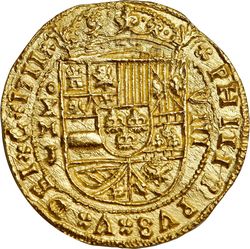
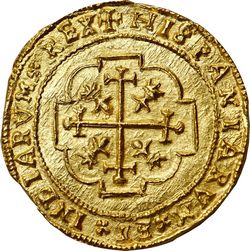
KM-R57.1 8E 1711 MXo-J (Stack’s Bowers Auction, 16 January 2021, lot 22182)
Two examples of the 1711 8 escudos were struck from the same dies with a clear die crack on the obverse running through the IP in PHILIPPVS. On the reverse, the formation and placement of the lettering and design is again identical.
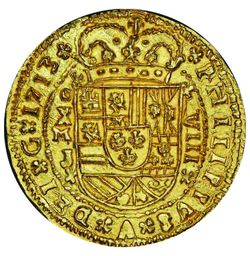

8e 1713 MXo-J (Daniel Frank Sedwick LLC’s Treasure Auction 28, 17 November 2020, lot 21)
Each Royal die was specially prepared with as much care and aesthetics as the mint could muster, using the same punches available for regular issues but with greater attention paid to concatenation and placement, usually allowing for more ornamentation in the legends and around the inner details. This 1713 issue, for example, has strange X-shaped flowers that appear both as stops in the legend and as space-fillers in the four “corners” of the shield (an aspect of this date only). Amazingly, the other 1713 was struck from different dies from the above coin and, in fact, most if not all of the non-unique dates exhibit multiple dies. Sedwick’s theory is that the amount of striking pressure required to properly make these big coins with full and bold details caused the dies to break after only a few strikes, and probably there were lots of failed attempts that were just re-melted. While it seems like a waste of resources to make fresh dies to net just a few coins (or less!), these were special issues commissioned by or for wealthy dignitaries who could afford the extra expense and did not need lots of coins.
Beginning in 1714, the striking quality changed significantly, with the fields becoming less coarse and the devices being more refined. While the reason for this remains unproven, it is likely that this marked the experimental beginning of milled coinage in Mexico.
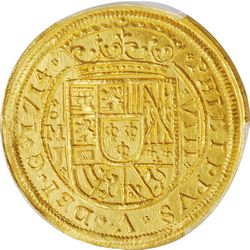
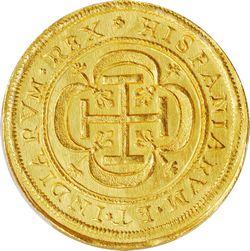
KM-R57.3 8E 1714-Mo J (Stack’s Bowers Auction, 6 August 2020, lot 21445)
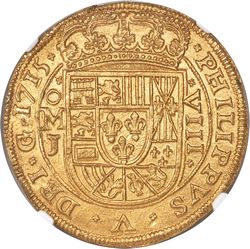
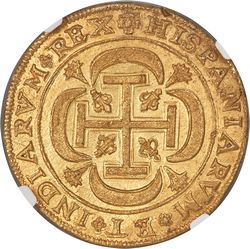
KM-R57.3 8e 1715 Mo J (Heritage Auction, 19 August 2021, lot 33259)
Variety with large rosettes in the reverse legend. From the 1715 Plate Fleet.
